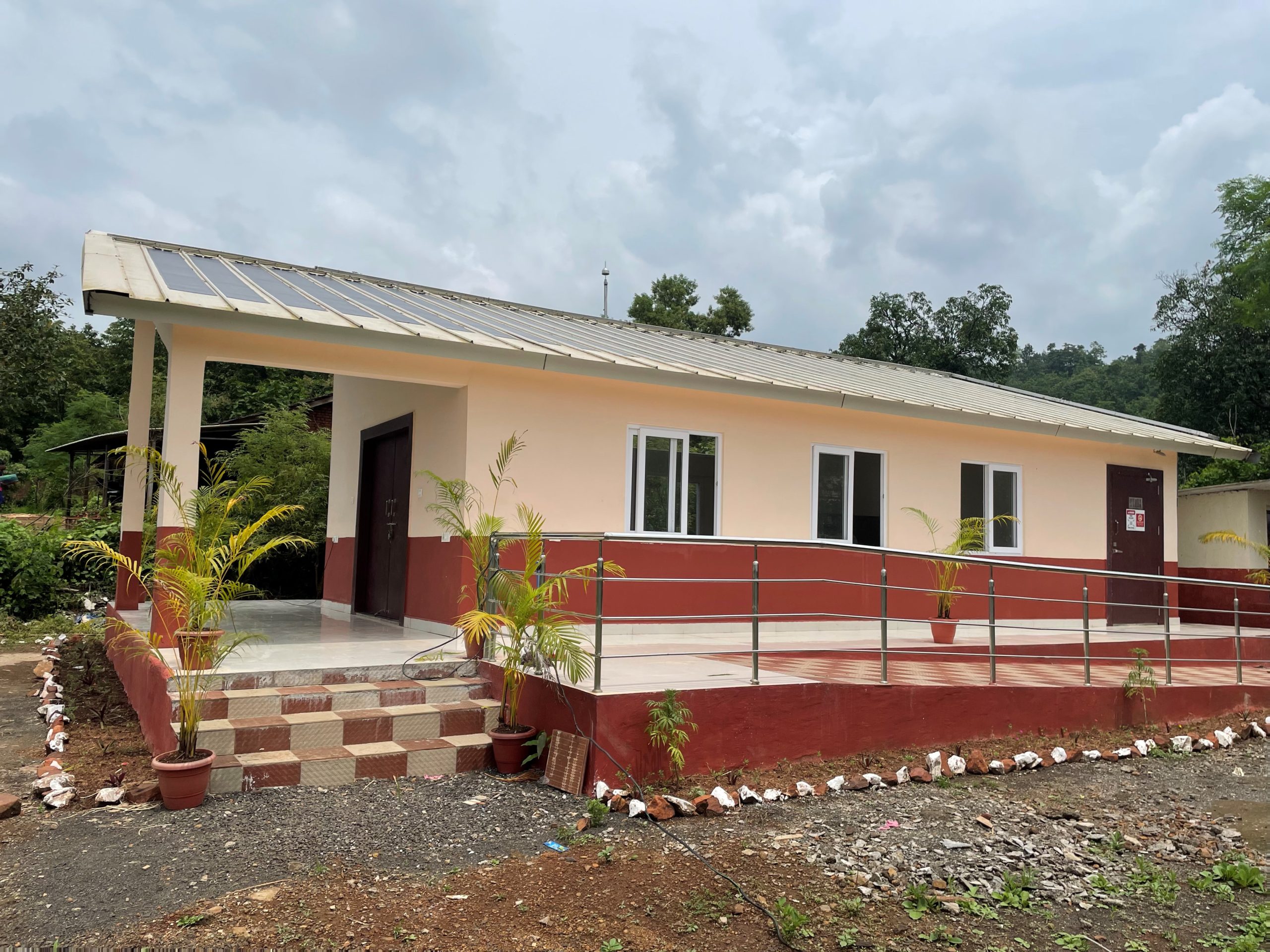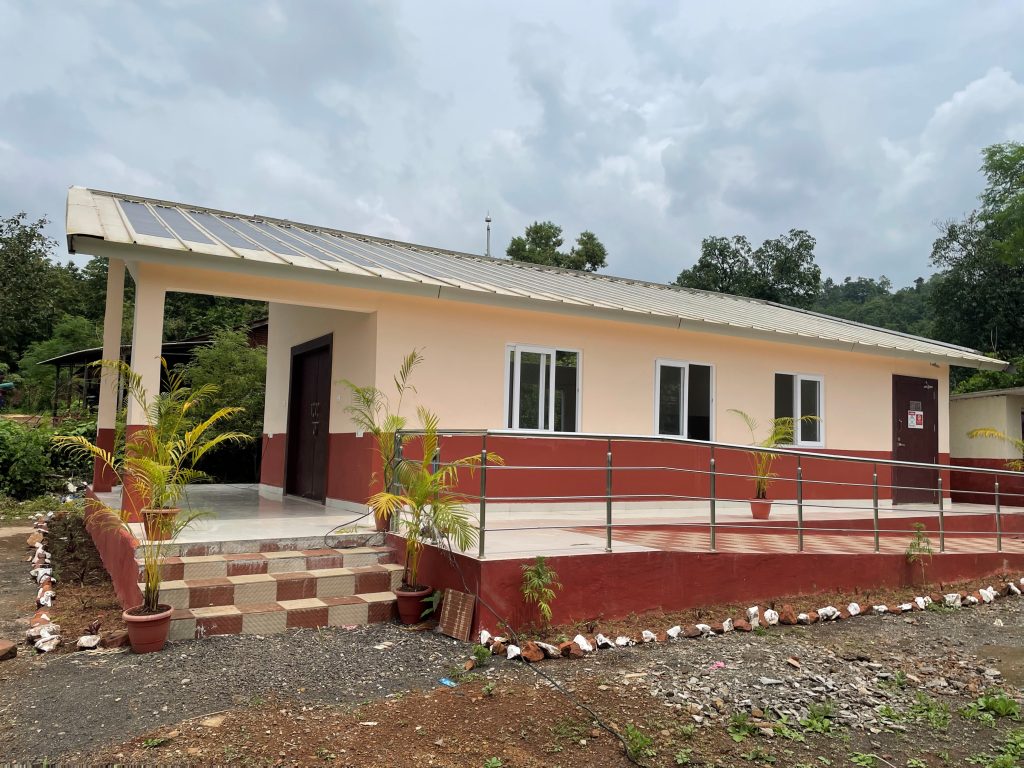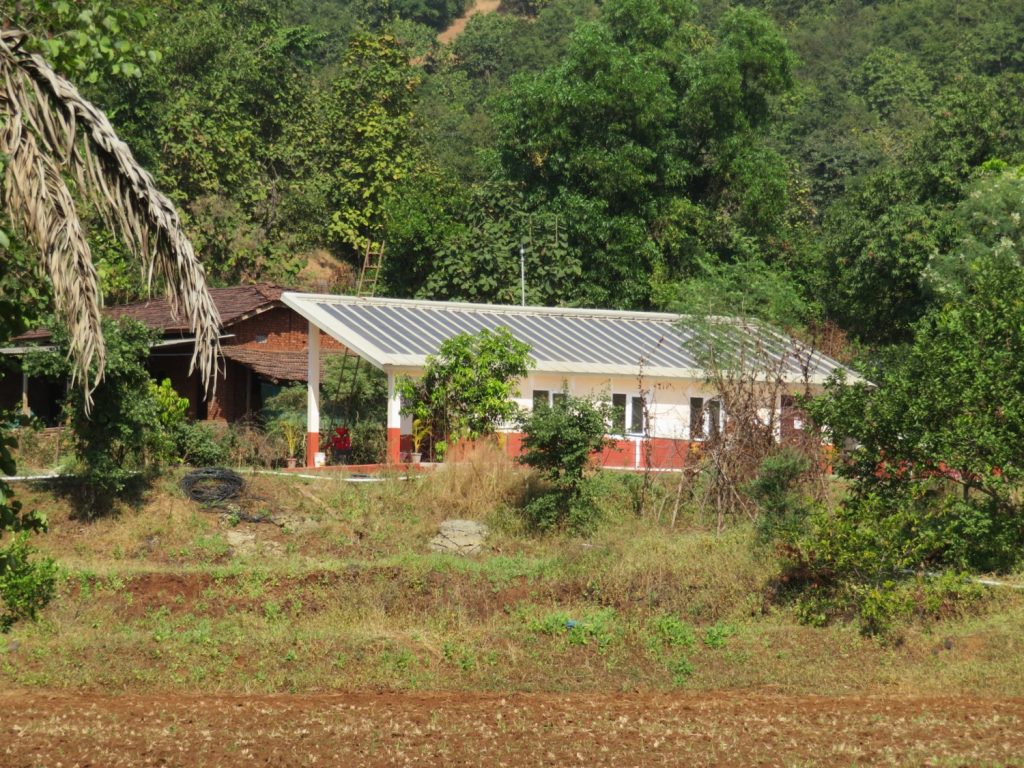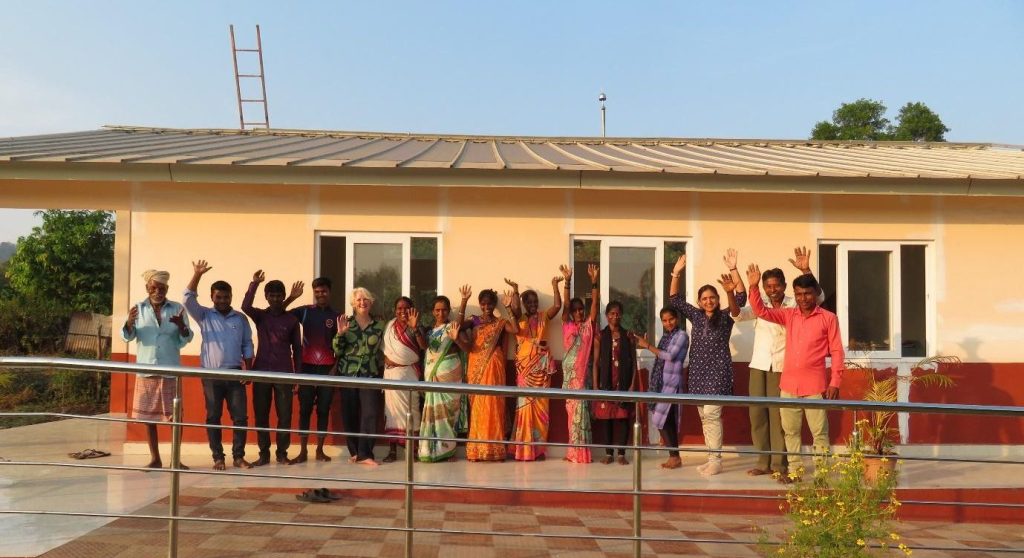
The Solar OASIS
The Solar OASIS is a sustainable development project delivered in partnership between Tata Cleantech Capital Ltd and Swansea University. A first-of-a-kind, functionalised community building, it uses solar power to generate, store, and release energy to be shared by the community.
Located in Khuded village in rural Maharashtra in western India, the Solar OASIS uses building integrated solar (BIPV) to generate clean, reliable, off-grid electricity, which will then be stored in batteries so the community can use it when it is needed.
Although Khuded is connected to the grid, the electricity supply is unreliable and expensive. Most residents rely on burning fossil fuels such as kerosene and firewood, which carry serious risks of respiratory diseases and fires.
The Solar OASIS will act as a flexible community space, providing a range of sustainable technologies that will reduce the need to burn fuels, including lighting and battery charging points for phones and lamps.
We made sure that the building was co-produced with the local community. Before any plans were made, the Tata Institute of Social Sciences and local charity Keshav Shrusthi worked with villagers on a survey, drawing up what was needed from the building, using arts-based methods of public involvement. Since many residents earn their living from agricultural produce, they identified that it would be important to install technologies that would improve income generated from agriculture. These include a rice husking machine, flour mill, bamboo slicing machine, and refrigeration unit for storing jasmine flowers.
Upon opening, the building was handed over to the Birari Pada Village Energy Committee, made up of local people who will be in charge of maintaining the building.
The Solar OASIS was designed by SUNRISE with support from the SPECIFIC Innovation and Knowledge Centre to ensure that it aligned with Active Building design principles. An Active Building is one which combines a range of integrated renewable energy technologies, which work together in one system to generate, store and release heat and electricity. Active Buildings have already been proven to work in the UK, but the Solar OASIS shows how they can be adapted and extended for the context of rural, remote India.
Buildings such as this one can help to deliver United Nations Sustainable Development Goal 7: sustainable, affordable, reliable, modern electricity for all. They can also play a key part in India’s National Solar Mission, which aims to establish India as a global leader in solar energy.
Funded by: UKRI through its Global Challenges Research Fund (GCRF) and Tata Cleantech Capital Limited CSR Fund.
NGO partner: Keshav Shrusthi
Project management services: EcoFirst Services Limited
Key technology suppliers: NestIn, BIPVco, and Swansea University
Community involvement parners: Tata Institute of Social Sciences and Swansea University Centre for Innovative Ageing




